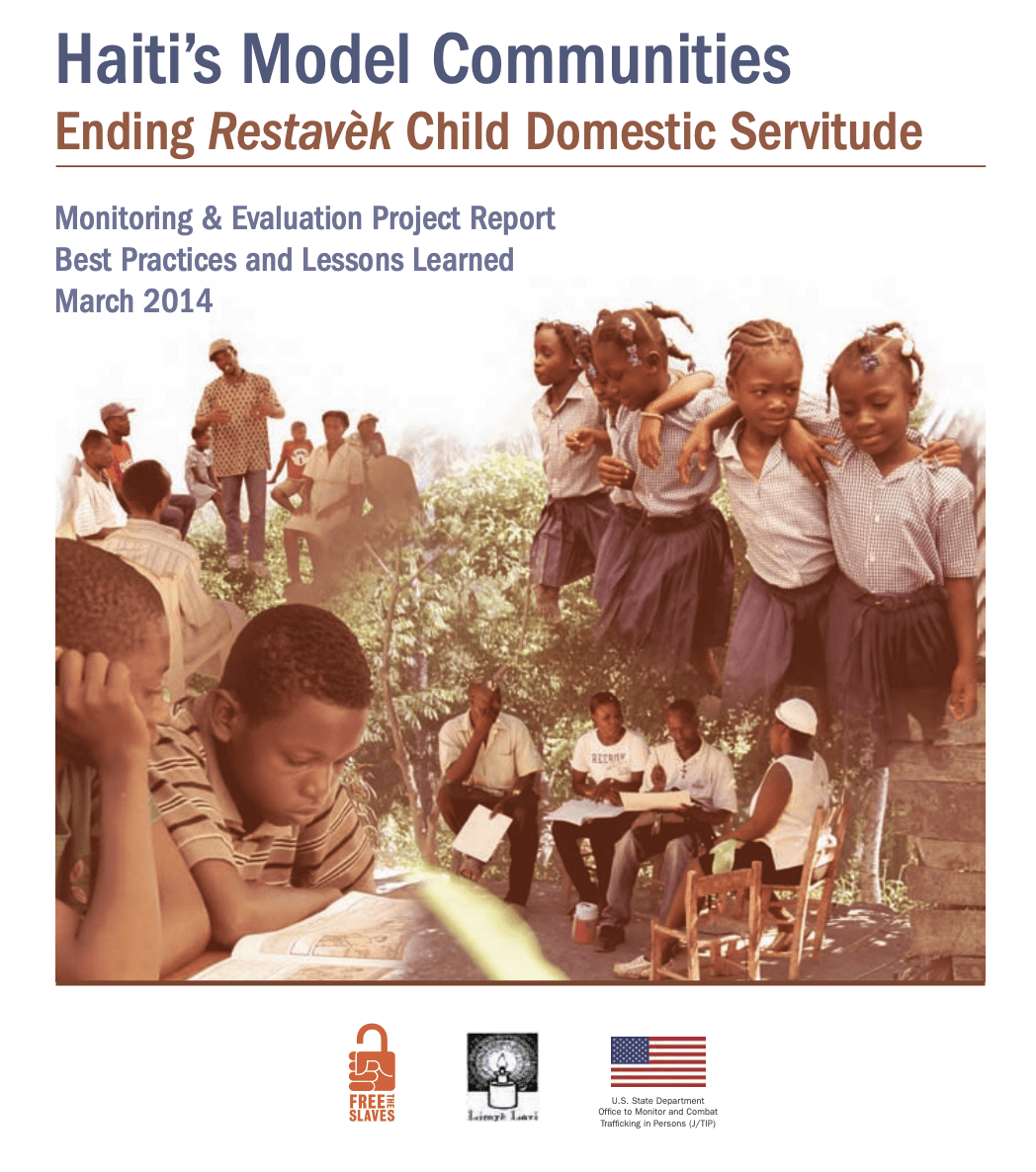
Haiti’s Model Communities: Ending Restavèk Child Domestic Servitude
Restavèk is a traditional system in which Haitian children are sent by parents to live with other families and work for them as domestic servants. In many cases, restevèk becomes child trafficking and forced labor slavery, where children are completely controlled through violence and exploited by members of the households where they work. Estimates of the number of children living in restevèk range from 150,000 to 300,000 — two-thirds of whom are girls. Despite Haitian law and Haiti’s signature on international codes that specifically prohibit the practice, restevèk continues largely unchecked.
In 2011, Free the Slaves began a three-year project in partnership with Fondasyon Limyè Lavi (FLL) entitled “Freedom for Haiti’s Children: Community Action to End Slavery Locally and Nationally,” funded by the U.S. State Department Office to Monitor and Combat Trafficking in Persons (J/ TIP). The project aimed to prevent and reverse the flow of children from Haitian source communities into restavèk slavery. The project utilized a holistic method for community development that is one of the first of its kind in Haiti: the Model Communities approach. It was designed through an analysis of the risk factors that underlie the sending of children into restavèk, as well as family and community support needed to prevent this phenomenon and assist families in retrieving children. This report provides the results of an evaluation of the Freedom for Haiti’s Children project and the effectiveness of the Model Communities approach.
Key Project Results and Evaluation Findings
- An estimated 27 percent of the children in villages reached by the project because family size and parental health can affect whether children are sent into restavèk. The intervention increased knowledge among approximately 500 participants about reproductive health, including how to prevent pregnancy and STDs; created a shift among participants toward attitudes favorable of family planning and prevention of STDs; and helped change behavior, including increased use of birth control.
- The children’s rights participatory learning method, in which 525 community members participated, was very effective at shifting norms by improving attitudes and behaviors related to children’s rights. Reported desirable behavior, such as better treatment of children, increased by 29 percentage points. This stimulated retrievals in all communities where there were restavèks to recover.
- Child protection committees were formed in each community to actively engage in efforts to prevent the sending of children into restavèk, to support returned children’s reintegration and to promote overall child welfare.
- A reproductive health participatory learning module was included in the project because family size and parental health can affect whether children are sent into restavèk. The intervention increased knowledge among approximately 500 participants about reproductive health, including how to prevent pregnancy and STDs; created a shift among participants toward attitudes favorable of family planning and prevention of STDs; and helped change behavior, including increased use of birth control.
- An accelerated education component provided a complete year of nearly-free education to an average of 148 children each year, helping to retain at-risk children in their communities of origin. It also contributed strongly to the reintegration of children who have returned from restavèk by serving 53 percent of the returnees in the communities assessed.
- Returned children reported overwhelmingly that they feel happier to be home with their families, feel freedom that they didn’t experience when they were in restavèk, and are glad to be in school. Children enjoy positive relationships with peers and siblings.
- Parents are facing difficulties in providing for returned children as a result of underproductive farmland and little to no work opportunities.
Read more here.
